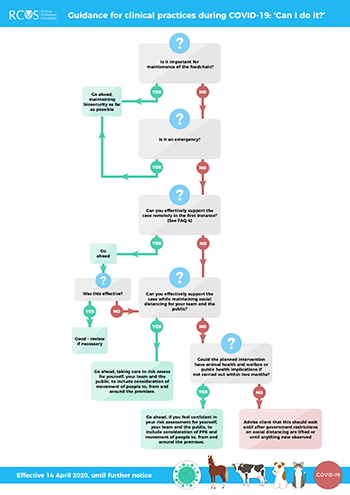-
-
- Standards Committee
- Advancement of the Professions Committee
- Audit and Risk Committee
- Education Committee
- Disciplinary Committee
- Charter Case Committee
- Preliminary Investigation Committee and Disciplinary Committee Liaison Committee
- Registration Committee
- Preliminary Investigation Committee
- Paper classification: some definitions
-
-
-
-
- About extra-mural studies (EMS)
- EMS requirements
- Information for vet students
- Information for EMS providers
- Information for vet schools
- Temporary EMS requirements
- Practice by students - regulations
- Health and safety on EMS placements
- EMS contacts and further guidance
- Extra-mural studies fit for the future
-
-
- Code of Professional Conduct for Veterinary Surgeons
- Code of Professional Conduct for Veterinary Nurses
- Contact the Advice Team
- XL Bully dog ban
- 'Under care' - guidance
- Advice on Schedule 3
- Controlled Drugs Guidance – A to Z
- Dealing with Difficult Situations webinar recordings
- FAQs – Common medicines pitfalls
- FAQs – Routine veterinary practice and clinical veterinary research
- FAQs – Advertising of practice names
- GDPR – RCVS information and Q&As
-
- Accrediting veterinary degrees
- Accrediting veterinary nursing qualifications
- Reasonable adjustments for student vets
- Health and disability in veterinary medicine study and practice
- The role of the veterinary schools and the RCVS
- Reasonable adjustments and the Equality Act 2010
- Reasonable adjustments and Day One Competences
- Examples of reasonable adjustments for vet students
- Annex
- Reasonable adjustments for student vets - summary
- Reasonable adjustments for student veterinary nurses
- Health and disability in veterinary nurse education and training
- Reasonable adjustments for students and the UK disability discrimination legislation
- Educational assessment of veterinary nurses
- Roles of key stakeholders in the application of reasonable adjustments
- Examples of reasonable adjustments for vet nurse students
- Embracing reasonable adjustments for student vet nurses - summary
- External review of the RCVS by ENQA
- Requirements for remote and online student assessments
‘Can I do it?’ An overview of our updated guidance
I was grateful to be invited to speak on the BVA’s Coronavirus Update Webinar this afternoon (12 April 2020), to discuss the College’s updated guidance to the veterinary professions on the coronavirus pandemic. Here’s (more or less!) what I had to say…
At the risk of sound ing like a well-known children’s cartoon construction character, ‘Can I do it?’ is the key question that we are asking veterinary professionals to consider with our updated coronavirus guidance to the profession that we published on 9 April.
ing like a well-known children’s cartoon construction character, ‘Can I do it?’ is the key question that we are asking veterinary professionals to consider with our updated coronavirus guidance to the profession that we published on 9 April.
The purpose of the updated RCVS guidance, which takes the form of a simple flowchart, is to help you to prioritise the health of your teams, clients and the wider public; adhere to the latest government guidance; and maintain animal health and welfare as far as possible.
It was produced and agreed by our Covid-19 Taskforce, which comprises a mix of practitioners and lay people from different clinical and wider veterinary backgrounds.
Our initial standpoint, as of 25 March, after the three-week lockdown was announced, was that only emergency or urgent veterinary work should take place. When we put out that original statement, government had not yet given specific guidance regarding business, so we were working on the basis of the guidance to the public – stay home, save lives.
So, the challenge for the RCVS, as a regulator that needs to follow government guidance, is to develop a position which abides by both the government’s guidance to the public and its guidance to businesses. Fortunately, one thing both sets of government advice agree on is that public health must come first. So that is the absolute priority of our initial guidance, and remains the absolute priority of new guidance, too.
That public guidance is still in place, but since then government has put out guidance for businesses that are able to stay open, which includes, and I quote: ‘It is important for business to carry on’. The more general message is to work at home, but if you can’t, continue with your work but do it safely.
Let me be completely clear: public health includes both your clients AND your teams.
This priority may seem strange from the organisation to which you declare that ‘ABOVE ALL, my constant endeavour will be to ensure the health and welfare of animals committed to my care’ but these are unique times and we must all play our part in helping reduce risk and flatten the curve.
 Our new flowchart should therefore be seen as a development of our initial guidance, rather than a major change.
Our new flowchart should therefore be seen as a development of our initial guidance, rather than a major change.
We recognise that the initial lockdown period seems very likely to continue for longer than the three weeks originally announced and, based on the experience of other countries, may last in some form for several more weeks or even months.
This means that animal health and welfare issues that are not a priority today, could become so over the coming weeks and months without veterinary intervention. Many members of the profession and public have been voicing concerns to us about this very prospect.
It’s important to support veterinary practices that need to start addressing these issues – which may well be local to their area – providing they also continue to abide by the government’s guidance to the public.
We have tried to future-proof our guidance by aligning to government’s social distancing rules – that means that when those relax – or, indeed, if they become stricter – your practice will still be able to take account of these when making your decisions.
We have been asked why we are encouraging practices to do more than emergency work when NHS hospitals are continuing to focus only on emergencies. This is because human medical resources are being diverted to the Covid-19 fight, whereas, on the whole, veterinary staff are not.
Human medical care also inevitably involves close person-to-person contact (and therefore much higher risk) than veterinary care, where a large amount can be done with minimal human contact.
So, again, we look to the government advice, which is, where possible and following social distancing, work should go on.
In no way are we expecting you to provide services that you don’t feel are appropriate. Our new flowchart is designed explicitly to allow you the flexibility to decide what is best in your own individual circumstances.
We also know that some of you are worried about a tsunami of cases heading your way and not having the resources to cope, especially when you have furloughed team members.
I think here we need to remember that, if you are anxious about social contact, so is the vast majority of the public. And secondly, as ever, you can only make appointments in line with the resources you have available, and with any additional time needed to ensure social distancing.
It’s good to see fantastic cooperation between practices so far, all working together, and we hope this will continue.
We will also be updating our advice to animal owners, and our accompanying digital resources for practices, to help you reinforce these messages to your clients
And it’s key to note that our chart is called ‘Can I do it?’ not ‘Should I do it?’
As ever, with RCVS guidance, we trust veterinary professionals to make decisions based on the specific situation with which they are faced, and their local knowledge.
Our guidance very much focuses on how you work, rather than what you are doing.All practices are different, with different facilities, staffing levels, species and local disease threats – so it’s important that our guidance, which all vets and nurses need to abide by, allows everyone to operate to the best of their abilities.
The ‘what’ can be considered by those who are closer to the detail: associations, employers and, of course, practice teams on the ground. This is entirely consistent with our general approach as your regulator – where possible we avoid being very prescriptive and granular, and rely instead on your professional veterinary judgement.
Will there be some who make different clinical decisions to others? No doubt – it was ever thus. But it’s on that basis that I would like to reassure you of two things:
- First, and I have said before, we at the RCVS understand the extreme challenges and difficult decisions you are facing, and have no interest in taking anyone to task for considered professional judgment, providing you act reasonably in the circumstances, can justify your actions and take reasonable notes.
- Second, this flowchart does not in any way represent ‘business as usual’. Decisions need to be taken in the light of the current very stringent government advice for social distancing – and that applies to clients and staff.
If you and your practice are unable to meet the social distancing guidelines, which include giving thought to limiting unnecessary travel, then the procedure should not go ahead unless there is a real, not nominal, animal health risk, and only then when care has been given to additional risk assessment and PPE.
I know that some of you are concerned that your clinical judgement in these matters may be over-ridden by senior colleagues, but please rest assured that although the College does not regulate businesses, we do require that every practice has a senior named veterinary surgeon who takes responsibility for clinical policy and it would be to that person that we would look if we hear that business as usual is being pursued in a reckless fashion.
So, just to sum up, the fundamental aims of this new guidance are to help you to:
- continue to prioritise public health – for you, your colleagues, and the public
- follow government guidance, especially around social distancing (for teams and clients, including unnecessary movement)
- decide what veterinary services you can provide, how to prioritise these, and how to manage risk - but it’s not business as usual
- maintain the viability of veterinary practice to continue to provide care for animals into the future
- communicate with clients about what it is appropriate to do for their animals right now and support you in making those decisions, which we accept are not always easy
It is really wonderful to see everyone pulling together in these unprecedented and scary times. Thank you for all you are doing, and I know will continue to do, for the public, for each other, and for the animals under our care now and in the future.
Published on 12 April 2020